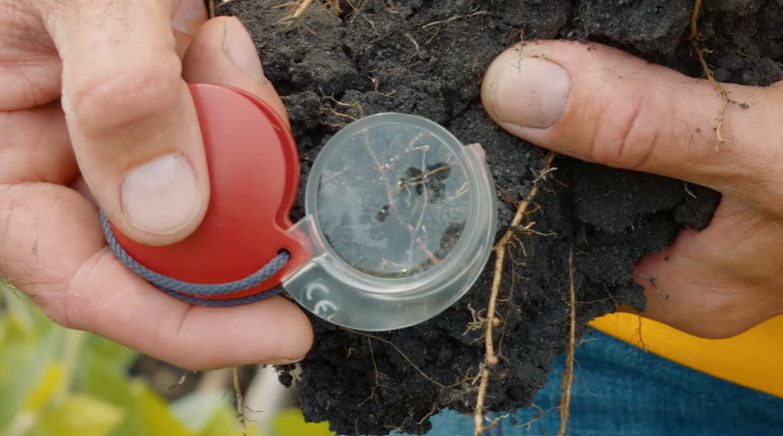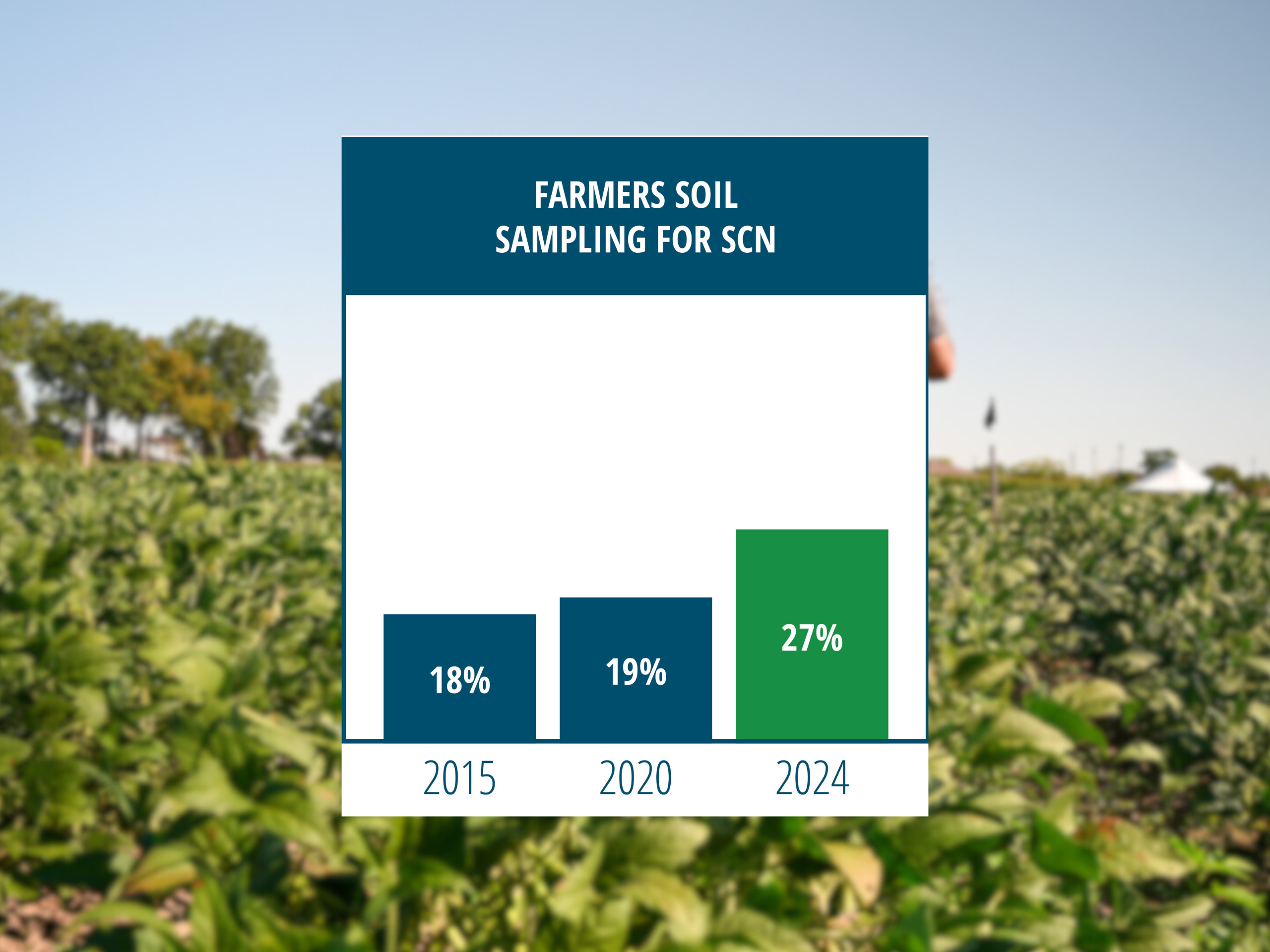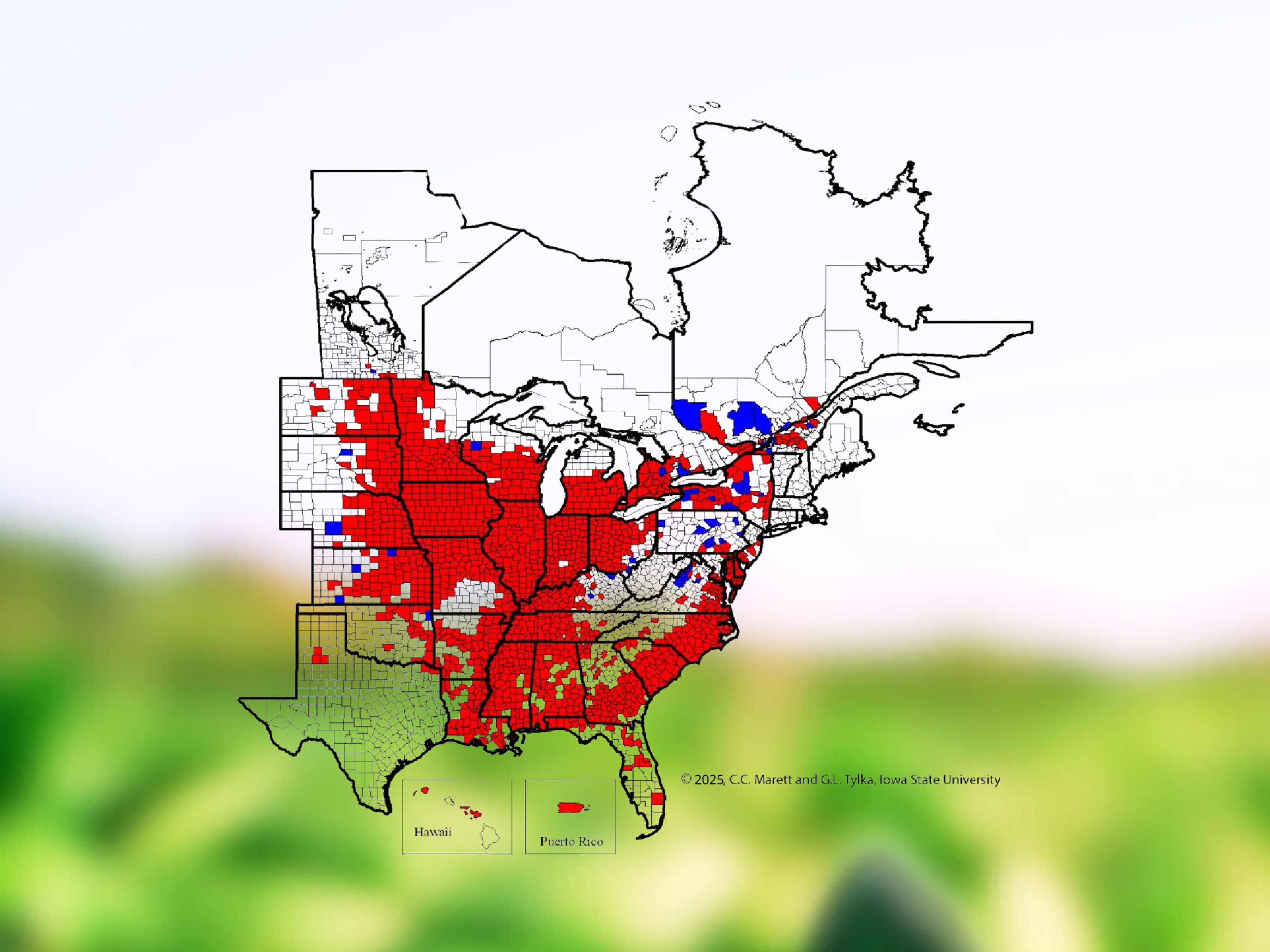Soybean cyst nematode (SCN) is the most important biotic yield threat to U.S. soybeans, costing soybean farmers an estimated $1.5 billion in economic losses each year. Those losses are likely to increase as the nematode adapts to and overcomes the genetic resistance known as PI 88788, which is used in roughly 95% of commercial SCN-resistant soybean varieties.

“If the current trend continues, it could be only a matter of time before the effectiveness of PI 88788 is completely gone. Without management changes, farmers could experience yield losses to SCN not seen since the 1980s, when all soybean varieties were susceptible to SCN,” says Dr. Sam Markell, North Dakota State University plant pathologist and a leader of The SCN Coalition.
That’s why the Coalition and its partners are arming farmers with the knowledge and tools they need for success in the war against SCN and are encouraging them to conduct an SCN root check this summer. Proactive management is farmers’ best defense against these parasitic roundworms that feed on soybean roots, robbing 23% of the plant’s yield potential1 and requiring farmers to plant more acres to feed the world.
Arming farmers with the resources needed to keep SCN in check
“Farmers’ best weapons going forward, in addition to non-host crop rotation, are to actively rotate PI 88788 with a variety with a different resistant source like Peking and/or consider the use of a nematode-protectant seed treatment,” Markell says, adding that Peking is not readily available to all farmers. “Attacking SCN on multiple fronts is critical to farm profitability and sustainability.”
Farmers considering a nematode-protectant seed treatment might also consider how it fits into their efficiency and sustainability goals, says Will Griffin, seed protection brand and asset manager at Valent U.S.A. For instance, he says a nematode-protectant seed treatment with low-use rates offers protection against SCN at planting, reducing the need for extra passes over a field.
“The efficiencies offered by a low-use rate seed treatment go beyond the cost and time savings,” Griffin says. “The low use rate allows multiple products to be added to seed protection mixes, including micronutrients, inoculants and others to support germination and growth. Low use rates also mean less packaging, as well as less volume to transport and store.”
Know your enemy: Check those roots!
Another critical component of fighting SCN is identifying whether your fields have SCN, how high your SCN counts are and whether you have a resistance issue. The answers to those questions should guide your plan of attack.
You can get the ball rolling midseason by gently digging up roots and using a hand lens to see if white females are attached to the soybean roots. You can find more guidance on when and how to check your roots in this video.
We’d love to see you out in the field checking your soybean roots. Share pictures on social media with the hashtag #SCNRootCheck and make sure to tag @TheSCNCoalition on Twitter and Facebook as well as @ValentUSA on Twitter and @WeAreValentUSA on Facebook.
Reference –
- McCarville, M.T., Marett, C.C., Mullaney, M.P., Gebhart, G.D. and Tylka, G.L. Increase in Soybean Cyst Nematode Virulence and Reproduction on Resistant Soybean Varieties in Iowa from 2001 to 2015 and the Effects on Soybean Yields. Plant Health Progress. 2017. 18(3):146-155.



